Sonuus G2M V3 Handleiding
Sonuus
Niet gecategoriseerd
G2M V3
Bekijk gratis de handleiding van Sonuus G2M V3 (3 pagina’s), behorend tot de categorie Niet gecategoriseerd. Deze gids werd als nuttig beoordeeld door 42 mensen en kreeg gemiddeld 4.4 sterren uit 21.5 reviews. Heb je een vraag over Sonuus G2M V3 of wil je andere gebruikers van dit product iets vragen? Stel een vraag
Pagina 1/3

G2M™ (Version 3)
Universal MIDI Converter
Owner’s Manual
G2M™ G2M™ G2M™ G2M™
Congratulations on your purchase of the
G2M™. Please take the time to read
through this manual to ensure you get the
best from your G2M™.
Introduction
What is the ?G2M™
The G2M™ is a simple to use and highly
effective
MIDI
converter. It’s the fastest,
most accurate, way to turn any musical
instrument into a
MIDI
instrument.
Your new “Version 3” featuresG2M™
several enhancements compared to the
previous versions, including support for
bass-register instruments and the latest,
state-of-the-art pitch-detection algorithms
only available from sonuus.
Designed to give accurate triggering, with
ultra-low latency, it is a true plug-and-play
solution for converting monophonic audio
into
MIDI
. It can be used to sequence bass
lines and guitar solos, add an edge to your
live performances and to open up many
creative possibilities.
Connections
Instrument In
Connect your instrument lead to the
IN
jack
socket using a standard ¼"
guitar/
instrument lead.
MIDI Out
Connect your
MIDI
device (or computer,
etc.
) to the
MIDI
OUT
socket using a
standard 5-pin
MIDI
lead. You can also
power self-powered
MIDI
devices such as
MIDI
mergers and message filters.
MIDI In
You can send
MIDI
controller messages to
the using a special G2M™
MIDI
breakout
cable (available from sonuus) which
converts the
MIDI
OUT
socket to both a
MIDI
OUT
and a
MIDI
IN
socket.
Instrument Thru
If you want to connect your instrument to
another device, or to your amplifier,
connect a lead to the
THRU
jack. The G2M™
has a high-impedance input and it will not
affect the sound of your instrument while it
is connected.
Power
9V DC
Your can be conveniently poweredG2M™
by a 9V DC power supply. Its low current
requirement (<30mA) means almost any
standard 9V power supply can be used
(2
·
1mm centre-pin, positive tip).
Battery (AA)
For true portability, the can also beG2M™
powered by a single AA battery (alkaline or
rechargeable). Simply open the battery
door and put in a battery observing the
correct polarity. If you connect it the wrong
way round it won’t cause any damage, but
the unit won’t operate until the battery is
inserted correctly.
Because of its low power consumption, the
unit will run for many hours (typically for
more than 20) on a single battery. When
the battery is close to needing to be
replaced, the
LOW
BATTERY
LED
will light. It is
not necessary to replace the battery
immediately since the will continueG2M™
to function normally. When the battery is
nearly exhausted, the
LOW
BATTERY
LED
will
flash and the battery must be replaced. If
you need the G2M™ to work reliably for
several hours (
e.g.,
a recording session, or
when playing live) the battery should be
replaced if the
LOW
BATTERY
LED
is lit.
When battery-powered, the G2M™ is
switched on when a lead is plugged into
the
IN
jack. To maximise battery life, this
jack must be disconnected when you are
not using the unit.
Power-Save (battery-power only)
After 30minutes of inactivity the G2M™
will enter a low-power (but not fully off)
state to preserve the battery. To restart the
unit, simply unplug and re-insert the lead
into the
IN
jack.
Operation
Using your G2M™ couldn’t be simpler:
• Plug your instrument (
e.g.,
electric
guitar) into the
IN
jack socket. The
POWER
LED
will light.
• Connect your
MIDI
device (or computer,
etc.
) to the
MIDI
OUT
socket.
• If the
CLIP
LED
lights, adjust your
instrument’s volume so that the
CLIP
LED
lights only occasionally while
playing normally.
• Optionally, check your guitar/bass is in
tune using the built-in tuner (if you
want to tune to standard tuning).
• Play your instrument to send
MIDI
to
your
MIDI
device (or sequencer,
etc.
).
Tuner
For your convenience, the includesG2M™
a built-in tuner. This uses our PULSAR™
tuning technology where the
POWER
LED
doubles as a tuning indicator. This
innovative tuner gives you a fast and
accurate way to tune your guitar or bass.
If there is no input signal, the
LED
will remain
lit and indicates that the unit is powered.
When there is an input signal, the
LED
will
pulse smoothly to indicate tuning.
When the note is out of tune, the
LED
will
pulse quickly. As you get closer to the
correct pitch, this pulsing will slow.
Eventually when you are perfectly in tune,
the pulsing will stop. Normally, as long as
the
LED
pulses slower than once per
second, the tuning is close enough for most
purposes.
It is always best to start at a lower pitch and
tune upwards to the correct pitch. As you
get closer to the correct pitch and the
pulsing slows down, turn your tuning head
more slowly to avoid overshooting the
correct pitch. Because the tuner is very
accurate you will find that very small
movements may be all that is required to
move from slightly out-of-tune to in-tune (or
indeed, to go from in-tune to slightly out-of-
tune). With only a little practice you will find
you can tune very quickly and accurately
using the PULSAR™ tuner.
MIDI
To capture all the nuances of your playing,
the sends note-on (with velocity),G2M™
note-off, pitch-bend and breath controller
(#2)
MIDI
messages.
Chromatic
The accurately tracks the pitch ofG2M™
notes and outputs pitch-bend
MIDI
messages but sometimes it is preferable to
send notes without pitch-bend information
(
e.g.,
when playing piano sounds). This can
be done by enabling the
CHROMATIC
switch
next to the
IN
jack socket.
MIDI Pitch Bend Sensitivity
For pitch-bend, the most common setting
for most
MIDI
devices is for full-scale pitch-
bend to represent ±2 semitones, and this is
also the default setting. It can alsoG2M™
be set to ±5, ±12 and ±36. To ensure your

G2M™ G2M™ G2M™ G2M™
MIDI
sounds are correctly in tune with your
instrument, ensure the
MIDI
patch you use is
set to match that of the G2M™.
For convenience, when the pitch-bend
range setting is changed or when
CHROMATIC
mode is turned off, the “Pitch-
Bend-Sensitivity”
MIDI
RPN
message is sent.
This allows
MIDI
instruments (which
support this message) to configure their
pitch-bend range to match the G2M™.
MIDI Performance Controllers
When using
MIDI
and audio together, it is
often desirable to be able to mute or hold
MIDI
notes while continuing to play your
instrument normally. For example, you can
trigger a bass note on your synthesizer
then play over it with your normal
instrument sound.
To allow this, the responds to theG2M™
following
MIDI
controller messages:
• Hold Controller (#4)
• Sustain Controller (#64)
• Volume Controller (#7)
Configuration Options
Inside the battery compartment are 8
switches that let you configure settings of
the . The label below is attached toG2M™
the battery compartment cover.
INSTR
optimises the G2M™ for the range of
a particular instrument:
• G = guitar (6 or 7 string)
• B4 = 4-string bass
• B5 = 5-string bass
• V = voice / wind
MIDI
OUT
selects the
MIDI
channel on which
the G2M™ sends
MIDI
messages.
BEND
sets the semitone pitch-bend range.
MIDI
IN
selects the
MIDI
channel on which
the G2M™ will receive
MIDI
messages.
PWR
SAVE
enables or disables power-save.
Usage Tips for MIDI Guitar
Ensure your instrument’s level is optimally
matched to the by turning down itsG2M™
volume control to avoid having the
CLIP
LED
flashing most of the time. Occasional (or
no) clipping will not cause any performance
problems and a high signal level ensures
that sounding notes will sustain for as long
as possible.
Slightly mute strings with your picking
hand. This helps prevent spurious
MIDI
notes when the wrong string is touched
lightly during playing. It also improves the
detection of rapidly picked notes because
notes can decay slightly faster to give
greater contrast between the new note and
the last note.
The G2M™ is great for sequencing natural-
sounding bass lines but if you try to
perform very fast notes on the lowest
strings, you may have some tracking
issues. To avoid this, play the notes on
higher octaves where tracking is fastest
and latency is the lowest. Then transpose
the recorded notes in your sequencer to
use as a bass line.
If you find that the wrong note (or octave)
is briefly detected when you pluck a note,
try the following tips for your guitar:
• Try using the neck pick-up.
• Turn down the tone control.
• Ensure there are no fret buzzes, and
don’t play percussive sounds or slaps.
• Use new strings.
• Slightly adjust your playing style or
playing position. Often moving where
you strike the string by a small amount
can give good results.
Remember the G2M™ accurately converts
the pitch of your instrument to
MIDI
messages. If your instrument is not in tune,
the
MIDI
won’t be in tune either!
For more in-depth tips, visit our FAQ page:
www.sonuus.com/FAQ
Further Information
Recommendations
Always disconnect the lead from the
IN
jack
when you are not actively using it. This will
prolong the life of the battery.
When storing your for an extendedG2M™
period, we recommend that you remove
the battery. Batteries can leak corrosive
materials which could damage your unit.
Do not expose the G2M™ to rain or
moisture. If this occurs, disconnect the
battery and allow the unit to dry out
completely before using it again.
Warranty
The G2M™ is supported by a limited
warranty for a period of one year from the
date of purchase. During this period, any
faults due to defective materials or
workmanship will be rectified (by repair or
replacement
†
) free of charge. The warranty
excludes damage caused by deliberate or
accidental misuse, modification, or
operation with an unsuitable external
power supply or an incorrect battery. It is
the user’s responsibility to ensure fitness
for purpose in any particular application.
The warranty is limited to the original
purchase price of the equipment, is limited
to the original purchaser, and excludes any
consequential damage or loss.
†. A unit replaced under warranty may be
replaced with a reconditioned unit.
Proof of purchase date is required for any
claim under this warranty.
Warranty claims must be made through
the retailer from whom the original
purchase was made.
Community
To see what other sonuus
products are
available, please visit:
www.sonuus.com
To get assistance or to share your
experiences, tips and tricks with other
G2M™ users, register on our user forum:
www.sonuus.com/forum
Specifications
The above specifications are subject to
change without notice.
sonuus, and areG2M™ PULSAR™
trademarks or registered trademarks of
Sonuus Limited.
© Copyright 2015 Sonuus Limited, All
Rights Reserved.
Power 9V DC (<30mA) or AA battery
Input-Z 10M
Ω
TUNER
Notes B1, E2, A2, D3, G3, B3, E4 (G / V)
B0, E1, A1, D2, G2, C3, F3 (bass)
Accuracy <1cent when pulsing at <1Hz
MIDI
CONVERSION
Note
range
(E1 – C7) Guitar
(D
b
1 – A6) 4-string bass
(A0 – F6) 5-string bass
Latency 5ms(E6) | 19ms(E2) | 32ms(E1)
Pitch
bend
<1cent accuracy
±2, ±5, ±12, ±36 semitones
PHYSICAL
Size 83mm
×
58mm
×
34mm
Weight 90g (without battery)
Inputs 6·35mm mono jack (switches
unit on when jack is inserted)
Outputs 6·35mm mono jack connected
directly to input jack (
THRU
)
Standard 5-pin
MIDI
DIN
socket.
Product specificaties
| Merk: | Sonuus |
| Categorie: | Niet gecategoriseerd |
| Model: | G2M V3 |
Heb je hulp nodig?
Als je hulp nodig hebt met Sonuus G2M V3 stel dan hieronder een vraag en andere gebruikers zullen je antwoorden
Handleiding Niet gecategoriseerd Sonuus

13 September 2023

13 September 2023

13 September 2023
Handleiding Niet gecategoriseerd
- Lumag
- PAX
- Vivitar
- DMT
- Levenhuk
- Tommee Tippee
- IMDEN
- Glyph
- Nextorage
- Luxman
- QuickCool
- Streetz
- Wimberley
- Rossum Electro-Music
- Loctite
Nieuwste handleidingen voor Niet gecategoriseerd
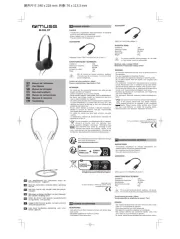
2 Augustus 2025
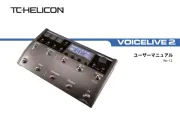
2 Augustus 2025
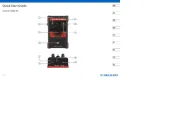
2 Augustus 2025

2 Augustus 2025
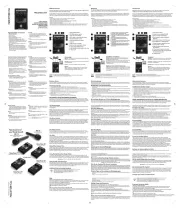
2 Augustus 2025
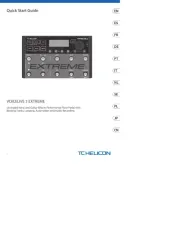
2 Augustus 2025
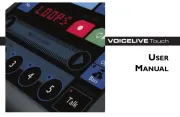
2 Augustus 2025
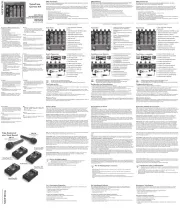
2 Augustus 2025
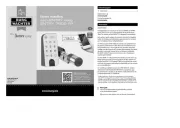
2 Augustus 2025
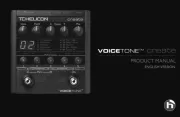
2 Augustus 2025